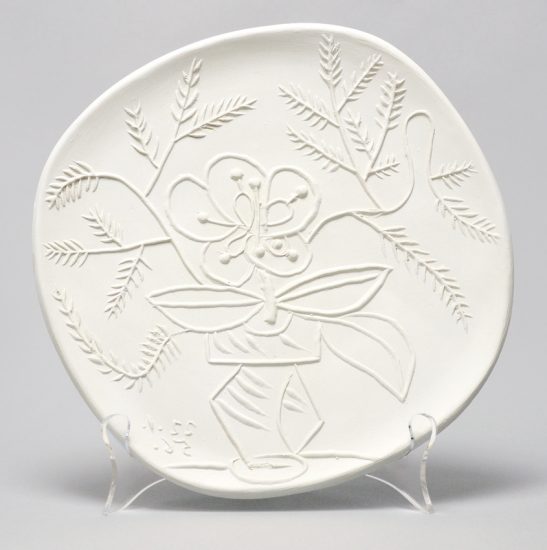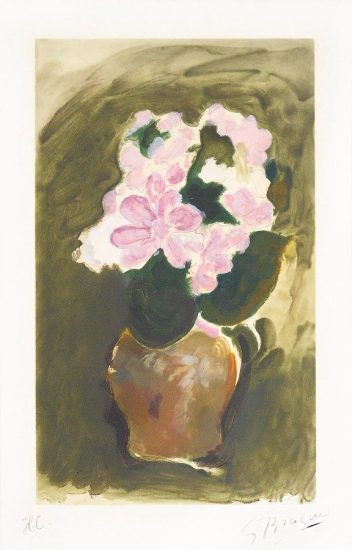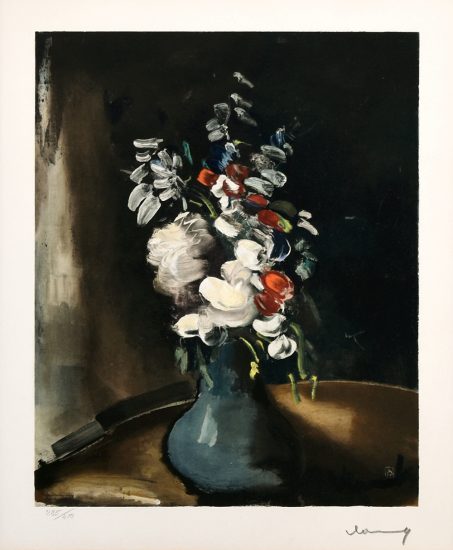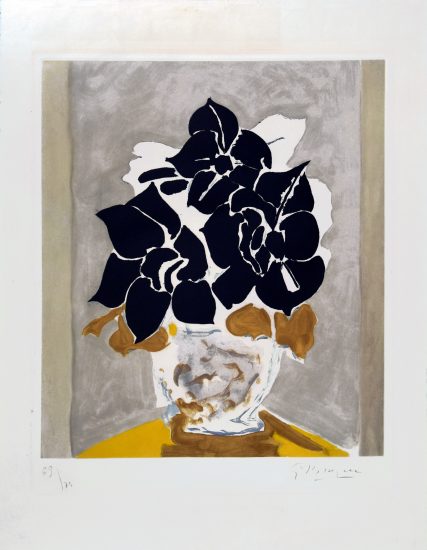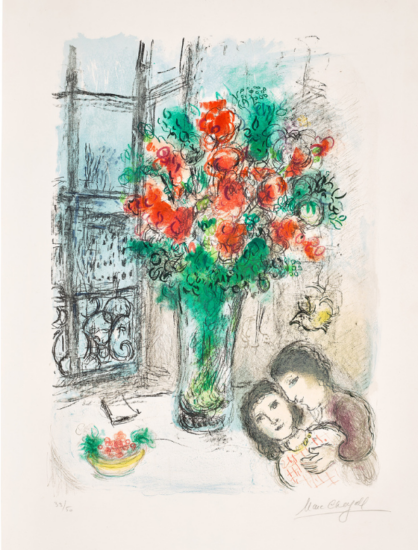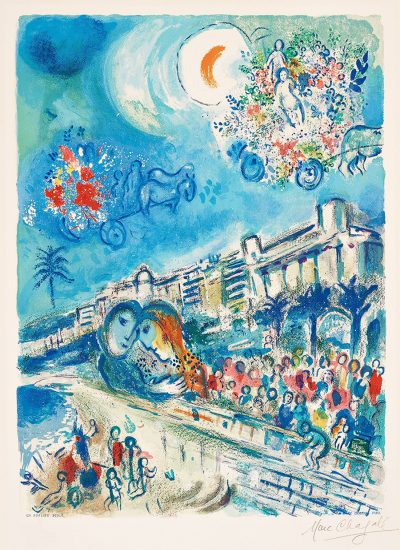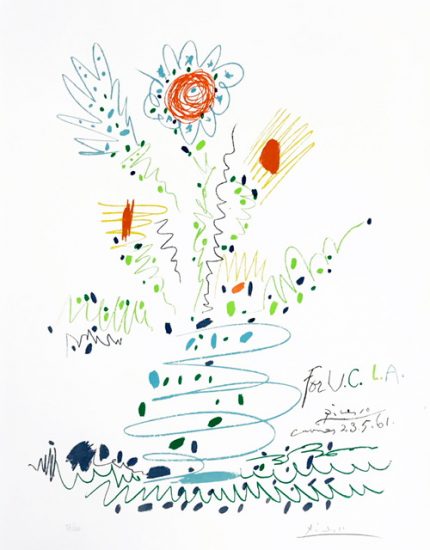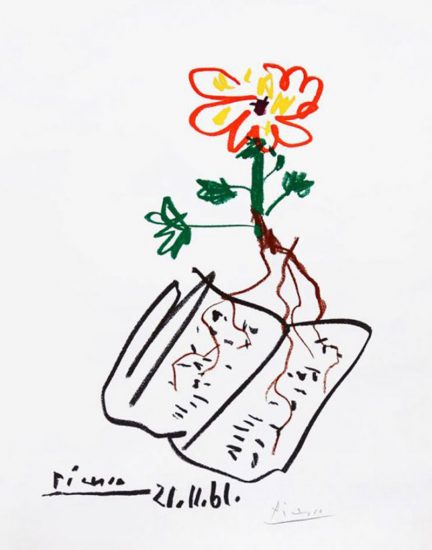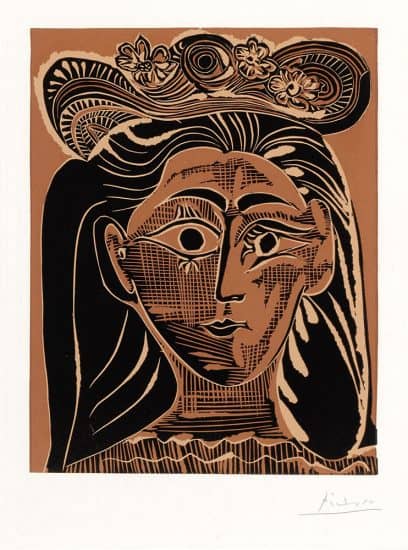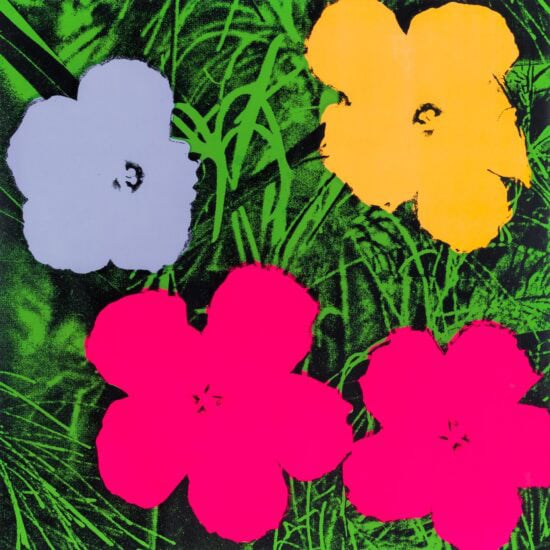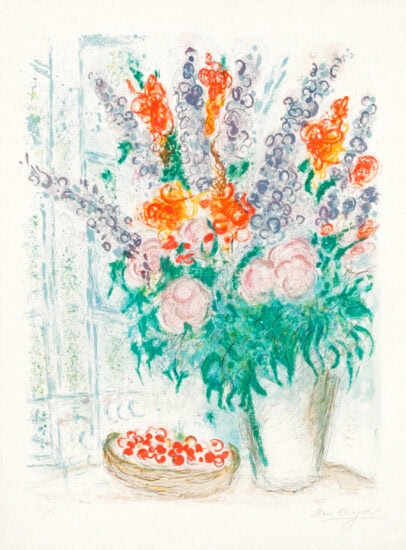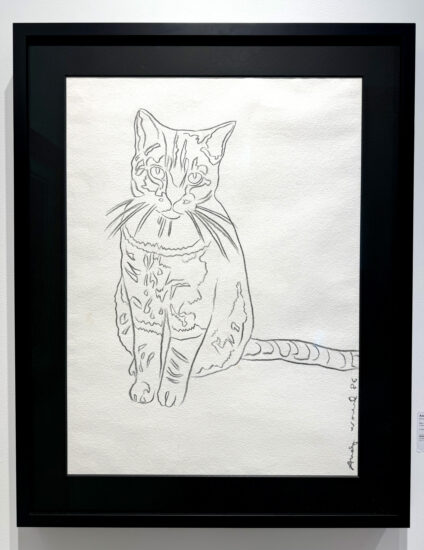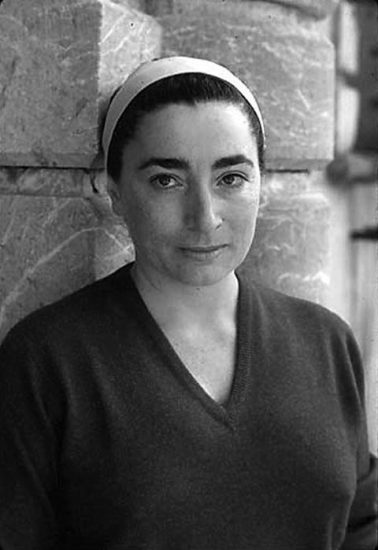Pablo Picasso was a prolific artist, creating an immense oeuvre in multiple mediums including graphic (with a large printed body), sculptural, ceramic, and some glasswork. Throughout his long artistic career, Picasso explored many diverse themes and subject matter in his work. One of the artistic designs that we can trace throughout his career are depictions of flowers in his work.
Picasso Flowers, with their delicate beauty and timeless symbolism, became an enduring subject in Picasso’s vast body of work. Though he is best known for revolutionizing modern art with Cubism and politically charged masterpieces like Guernica, Picasso also returned time and again to the simplicity and elegance of flowers. This motif allowed him to explore themes of peace, love, and renewal, while also serving as a vehicle for formal experimentation across multiple mediums.
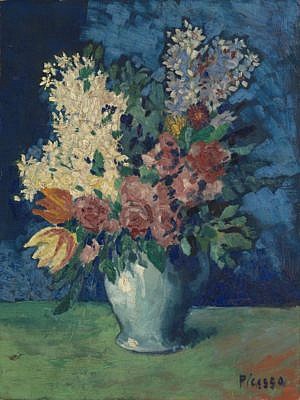
In the early days of his career Picasso was more prone to naturalism than in his later works. We see this representing in Fleurs, 1901 which now hangs in the Tate Modern, in London. A bountiful bouquet de fleurs in classic still-life form rests as the central image of the canvas. It sits on the flat plane of a table and behind is a neutral blue wall against which the rich reds, oranges, and yellows pop. Each flower is rendered realistically with petals gently delineated. The lithograph based on Jacqueline with Flowers shows, in part, the transition to his later style.

Picasso is credited with the development of the cubist style in the early 20th century. As naturalistic as the previous work looked, only 9 years later Picasso’s still-life bouquet looks quite different. In this classically cubist work Vase de fleurs, 1910, the subject matter of flowers almost disappears. The tonal palate is full of browns, yellows, and grays, nothing like the more realistic palate of Fleurs, 1901. Through the angles, we can just make out some highly abstracted flowers, which blossom from a vague vase in the middle of the painting.
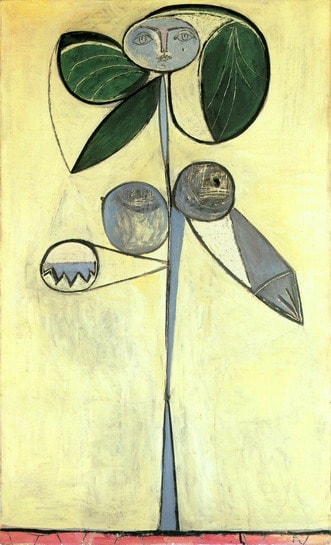
Later, in 1946, we see yet another interpretation of Picasso’s flowers. This time, his lover, Françoise Gilot, has been depicted as the flower herself. She is in full bloom with full petals that double as hair, and drooping leaves. The message of fertility is strong here, with Gilot depicted having large breasts that double as petals.
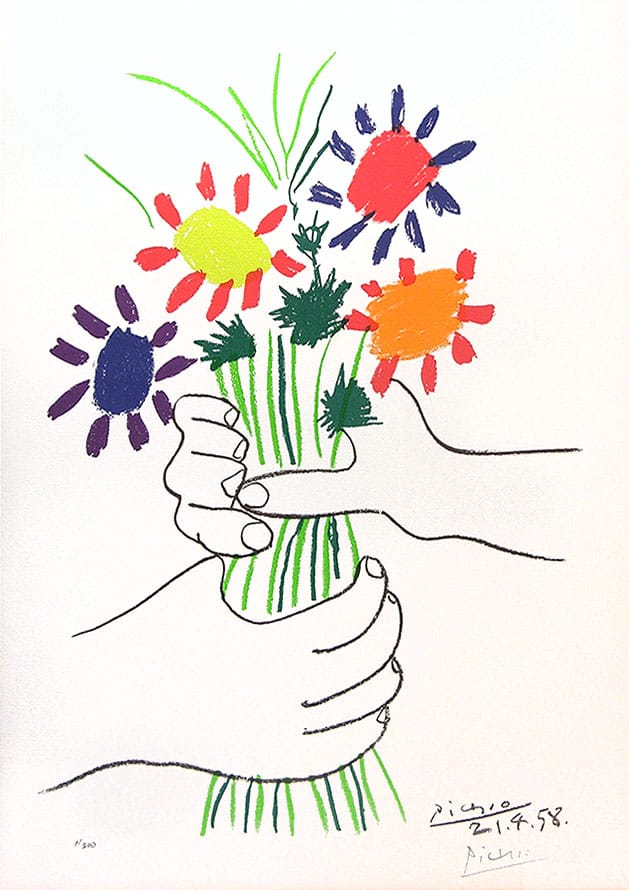
As we go later still in Picasso’s career, another style of depicting flowers comes about. Bouquet of Peace depicts simplistically drawn yet brightly colored flowers as the centerpiece of the composition. The flowers all appear as a similar type, but what is more important is the feeling the flowers engage in the viewer with their bright, ray-like petals.
Picasso Flower Ceramics
Picasso’s flower ceramics are a fascinating and highly collectible part of his oeuvre, reflecting his lifelong fascination with both nature and reinvention. After moving to Vallauris in the late 1940s, Picasso began working at the Madoura Pottery Studio, where he explored the ceramic medium with a freedom that allowed him to blend utility, decoration, and fine art. Flowers became one of his most joyful motifs in these creations. Some key aspects are:
Playful Experimentation – Picasso decorated plates, pitchers, bowls, and vases with stylized blossoms, often combining floral motifs with birds, animals, or abstract patterns.
Symbolism of Renewal – Post-World War II, the flower became a sign of hope, rebirth, and peace, echoing similar themes in his drawings and lithographs.
Integration of Color & Form – He used bold glazes and earthy textures to make flowers feel vibrant and tactile, merging painterly qualities with sculptural volume.
Unique Limited Editions – Many floral ceramics were produced in limited runs at Madoura, making them highly sought after by collectors. Some are unique, hand-painted pieces that carry even greater rarity and value.
Accessible Masterworks – While his paintings often command astronomical prices, Picasso’s flower ceramics offer collectors a way to own a work by the artist at a more approachable level, though their value continues to rise.
Today, Picasso’s flower ceramics are represented in major collections, including the Musée Picasso in Paris, the Museu Picasso in Barcelona, and in private collections worldwide. They are celebrated for capturing the artist’s playful spirit and ability to transform everyday objects into works of lasting beauty.
Picasso Flower Ceramic Plate

Picasso Flower Ceramic vase
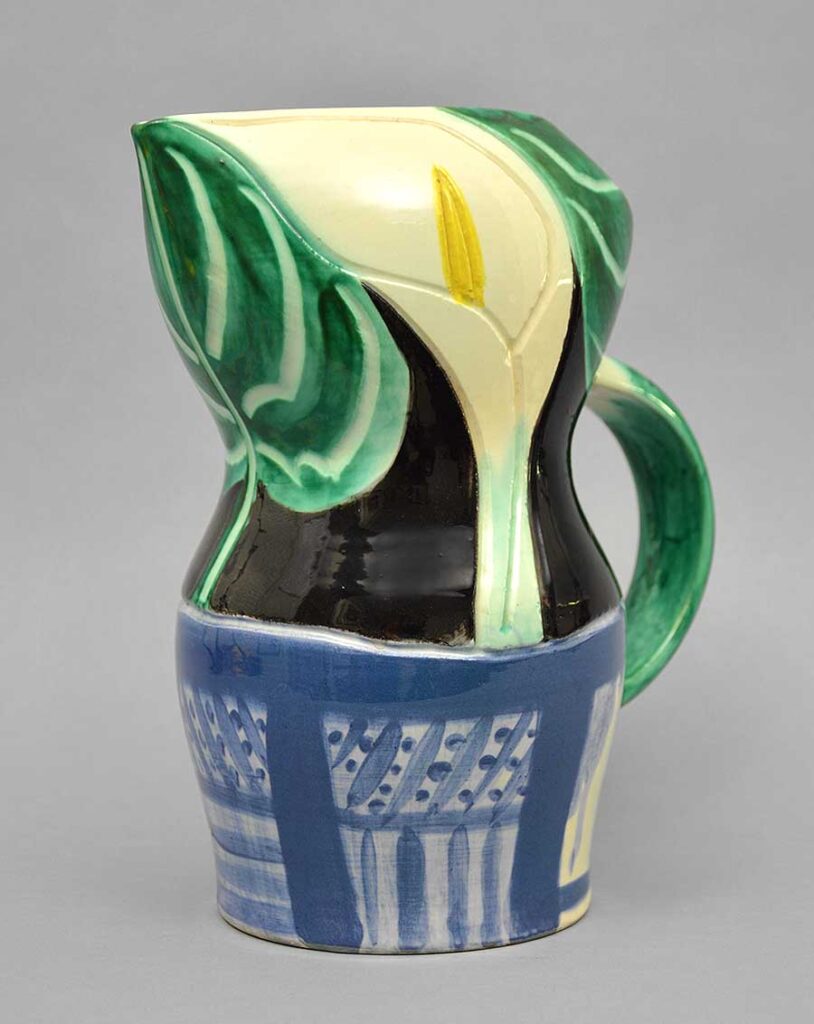
Picasso Flower Ceramic Plate

Picasso Flower Ceramic vase
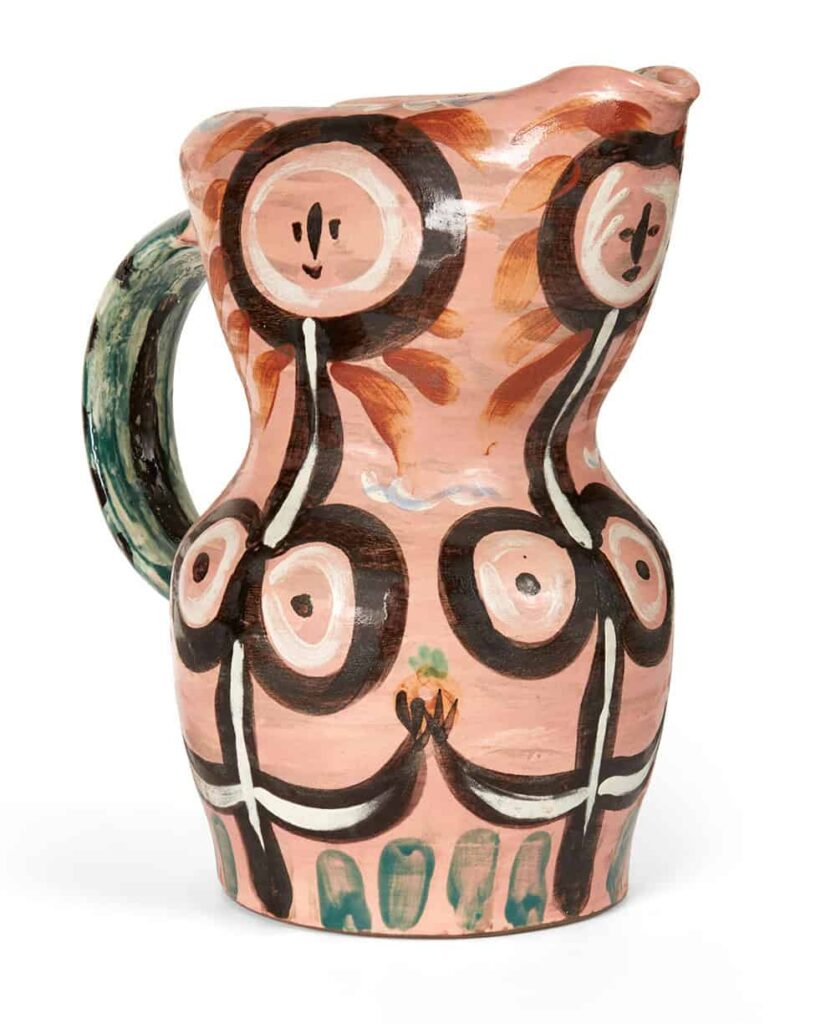
Why Did Picasso Paint Flowers?
For Picasso, flowers were more than ornamental—they were deeply symbolic. They embodied vitality, growth, and fleeting beauty, often carrying personal and political connotations. His Dove with Flowers, for example, became a universal emblem of peace after World War II, encapsulating hope in a time of destruction. On a more intimate level, Picasso frequently gave floral drawings and lithographs as personal gifts, tokens of affection that reveal the warmth behind his often fiery persona. The flower, therefore, was both a universal symbol and a personal gesture in his artistic language.
Flowers in His Artistic Oeuvre
Within Picasso’s oeuvre, flowers occupy a fascinating dual role. In his Cubist still lifes, bouquets were fractured into bold geometric shards, pushing the boundaries of perception and representation. Later, in ceramics created at Vallauris, flowers appeared as playful decorative motifs, merging painting and sculpture in tactile, joyful designs. In his later lithographs and line drawings, Picasso stripped the subject down to its essence, often capturing a bouquet with just a few spontaneous, flowing lines. Through each medium—painting, printmaking, ceramics, and drawing—flowers offered Picasso a space for experimentation, renewal, and lyrical expression.

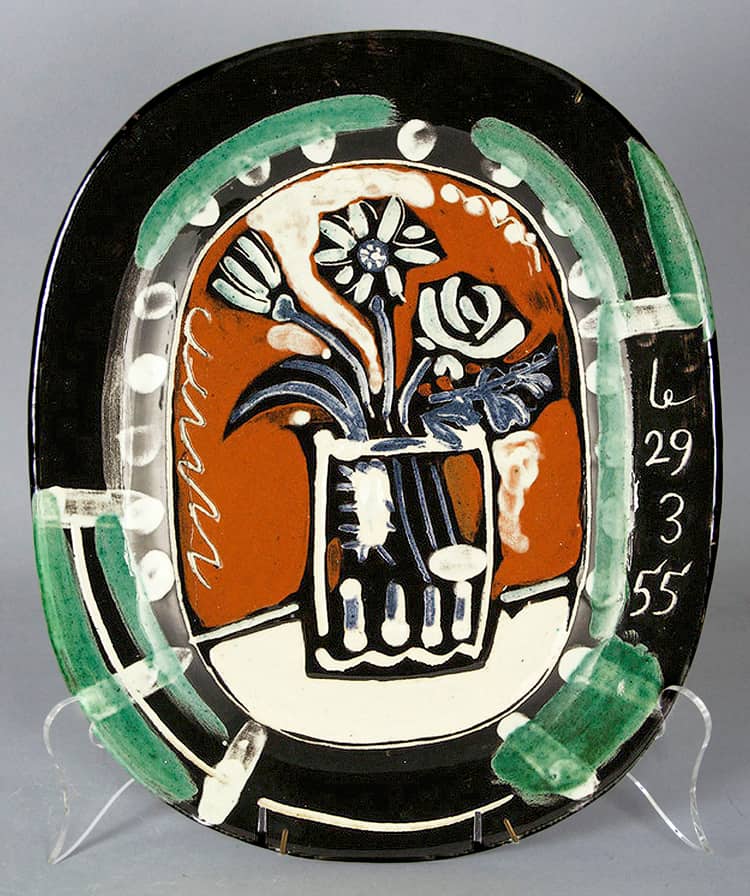
The Appreciation of Picasso’s Flowers
Today, Picasso’s floral works are highly sought after by collectors and deeply admired by scholars and art lovers alike. Their versatility, ranging from bold abstraction to childlike simplicity, reflects the artist’s genius for transforming the ordinary into the extraordinary. Beyond their aesthetic appeal, they embody universal themes of life, love, and peace, making them resonate across generations and cultures. Their presence in major museum collections and their continued success at auction underscore their enduring value in the art market.
Picasso Flower Artworks in Museums Worldwide
1. Flowers (1901) – Tate Britain, London
An early work from Picasso’s formative years, this oil painting titled Flowers (1901) diverges from the melancholic blue tones of his Blue Period. Displayed at Tate Britain since 1933, it exemplifies his budding interest in still-life composition and color symbolism.
2. Flowers in a Grey Jar (1908) – Hermitage Museum, Saint Petersburg
A striking Cubist still life, Flowers in a Grey Jar breaks blooms into geometric forms and subdued tones—reflective of Picasso’s early forays into fragmentation and abstraction.
3. Mandolin and Vase of Flowers (1934) – Saint Louis Art Museum
This composition combines florals, fruit, and musical elements in Picasso’s signature patchwork of color and outline—reminiscent of stained glass. Currently in the Saint Louis Art Museum’s collection, it bridges still life with Cubist stylization.
4. Composition with a Vase of Flowers (1947, print) – Harvard Art Museums
A lithograph from 1947, this print offers a simplified yet expressive floral arrangement. Its refined lines and minimal palette reflect Picasso’s evolving style in prints and graphic media.
5. Flowers in a Vase (ceramic sculpture, early 1950s) – Nasher Sculpture Center / MoMA tour
An inventive mixed-media sculpture, Flowers in a Vase combines plaster and ceramics with visible metal framework—crafted from scraps and everyday materials. It has featured in exhibitions at the Nasher Sculpture Center and traveled to MoMA, highlighting Picasso’s playful experimentation in three dimensions.
Picasso's Flower Painting Record Price
Picasso's most expensive flower-themed painting ever sold at auction, that distinction belongs to Young Girl with a Flower Basket (also known by its French title Fillette à la corbeille fleurie, 1905). Executed during Picasso's Rose Period, it depicts a young girl holding a basket of red poppies—flowers that gently echo the painting’s tender subject and nuanced beauty.
This painting fetched US $115 million (including buyer’s premium) at Christie’s New York in May 2018, as part of the Peggy and David Rockefeller collection auction. It marked the second-highest auction result ever achieved for Picasso at the time.
Enjoy our collection of fine art Pablo Picasso flowers.


